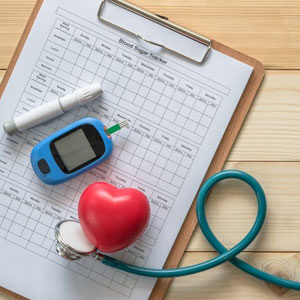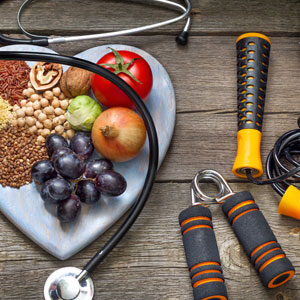Injection Perfection: Insulin 101 Insulin is the hormone that your...
Read MoreIntroducing the BD Nano (TM) 2nd Gen Pen Needles
BD Nano (TM) 2nd Gen Pen Needles
For easy, more comfortable injections from start to finish. (1)
The latest innovation from BD Diabetes Care, a worldwide leader in diabetes care
– The updated design of BD Nano™ 2nd Gen Pen Needles now with patented features that include:
– Wider outer cover that makes it easier to attach to your pen injection device1
– Larger, green, inner needle shield that’s easier to grip and remove before you inject1
– Comfortable, contoured needle base that helps you hold the pen against your skin, without wobbling, also providing a more reliable injection1,2*^
– Existing proven benefits of BD Ultra-Fine™ PentaPoint™ Comfort and EasyFlow™ Technology3,4-
– The ergonomic design of BD Nano™ 2nd Gen Pen Needles provides an easier and more comfortable injection experience1**
– Covered by most health plans at the lowest co-pay, including Medicare Part Dt.
– Compatible with widely used pen injection devices5
– Please refer to the manufacturer’s insert that came with the pen device
– Non-Toxic, Non-Pyrogenic
– Not made with natural rubber latex
– Sterile single use pen needles
– Use once, remove and properly contain
– Made in Ireland
Introducing the BD (TM) Diabetes Care App
The mobile app that offers diabetes self-management tools and education. 24/7. Anytime. Anywhere.
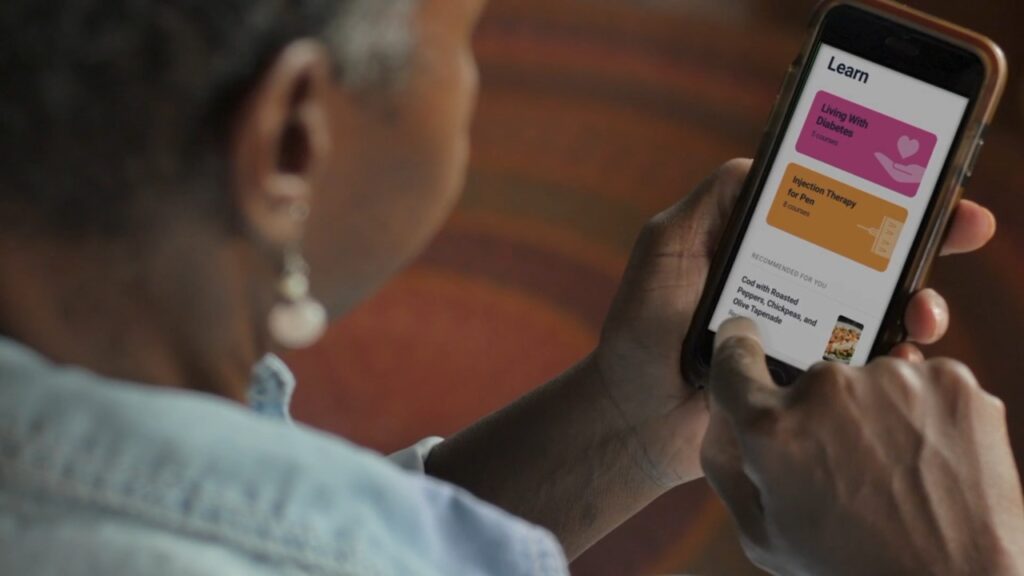
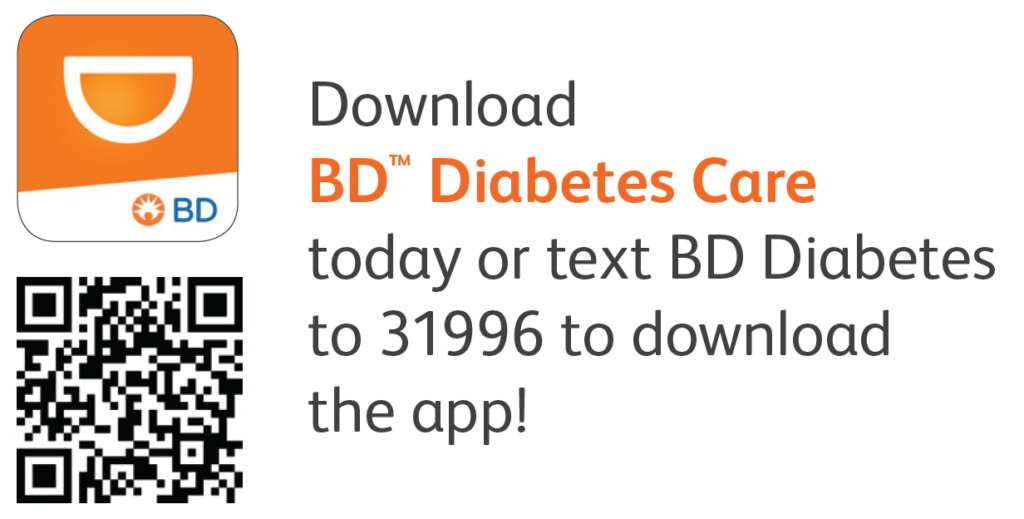
MANAGE YOUR DIABETES WITH THE DIABETES ADVANTAGE PROGRAM
Our Diabetes AdvantEdge Program is your complete diabetes care solution. Let our Pharmacists help you with your medication, testing supplies, blood pressure screenings, immunizations and nutrition information with Know Your Colors.
Find out more about diabetes
So I Have Diabetes… What Now?
So I Have Diabetes… What Now? 1.5 million Americans are...
Read MoreDiabetes Control with Medication and Blood Glucose Monitoring to Prevent Complications
Diabetes Control with Medication and Blood Glucose Monitoring to Prevent...
Read MoreEnjoy These Diabetic-Friendly Recipes
* Compared to other pen needles studied.
^ Reliability results from swine studies showing insulin under the skin.
**Results from clinical study assessing patient preferences and feedback compared to other pen needles studied.
t Co-pays and preferred status vary by plan.
References:
1. Whooley S, Briskin T, Gibney MA, et al. Evaluating the User Performance and Experience with a Re-Engineered 4 mm x 32G Pen Needle: A Randomized Trial with Similar Length/Gauge Needles. Diabetes Ther. 2019;10(2):697-712.
2. Rini C, Roberts BC, Morel D, et al. Evaluating the Impact of Human Factors and Pen Needle Design on
Insulin Pen Injection. J Diabetes Sci Technol. 2019;13(3):533-545.
3. Aronson R et al. Clin. Therap. 2013;35(7):923–933.
4. Hirsch L, et al. Jrnl of Diab. Sci. and Tech. 2012;6(2):328–335
5. BD Compatibility Confirmation for Pen Needles and Pen Injector Manufacturers, Document Number: 149OTH-0004¬-20, Rev P, Dated 07 February 2020.
U.S. Patent Nos. D787054, D825749, D804023 and other patents pending.
Veeva approved — BD-20808
Know your colors nutrition guide at Price Chopper and Market 32
The Carb Smart, Heart Smart and Whole Grain nutrition attributes include nutrition standards used by federal and non-profit health organizations to encourage eating foods that offer nutrient benefits, such as nutrient dense whole foods, and help shoppers reduce the intake of sodium, simple and added sugars and fats that can negatively impact health. The color guides are on shelf tags in stores, and may help time-crunched shoppers locate items that meet lifestyle goals. Please see the whole program for the full criteria.
Living Well with Diabetes
Your Price Chopper Market 32 Pharmacy and Nutrition Team can help you take care of Diabetes.
Whether just diagnosed or managing diabetes for some time, our Pharmacists and Registered Dietitian-Nutritionist have information and resources that can help you enjoy a healthy, happy life. Important guidance to follow:
- Always follow your health care provider’s directions.
- Talk to your health care provider, diabetes educator, pharmacist or dietitian when you have questions.
- Be sure to take medications as directed. Talk to your Price Chopper Pharmacist about the Diabetes AdvantEdge program and other ways to manage your medications. We have courtesy refills, mobile text alerts, and a mobile app available.
Eating Well with Diabetes
There are different ways to eat well for diabetes. The American Diabetes Association recommends an individualized plan, emphasizes management of carbohydrate intake, and promotes intake of nutrient-rich and higher fiber whole foods, including beans, dark leafy greens, citrus, berries, tomatoes, salmon, nuts, whole grains, lean proteins, and low fat dairy including milk and yogurt. Reading food labels and balancing intake with activity is also important. Your Health Care Provider will assist you with plan guidelines and referrals to a registered dietitian-nutritionist for your personal plan for eating and managing well. www.diabetes.org
FOOD FACTS
What is a Carbohydrate? Carbohydrates – may also be called “Carbs”. Carbohydrates supply essential energy used by your brain, muscles and organs, and are found in fruits, vegetables, dairy and all types of grain-based foods. They are also found in sugar-sweetened beverages, juice, desserts and candy. Learning to balance carbohydrate intake is key to good diabetes management.
What is Healthy Fat? Healthy fats in small amounts help balance meals, increase satiety, add flavor and assist with absorption of some vitamins. Healthy fats are found in oils like olive, canola, soy, and sunflower; nuts and seeds; and avocados.
What is a Good Source of Protein? Protein helps balance meals, and supports muscle growth and maintenance, healthy weight, and satiety. Protein can be found in a wide range of foods, including meats, poultry, seafood, dairy, whole grains, legumes and beans. There is also a small amount of protein in vegetables.
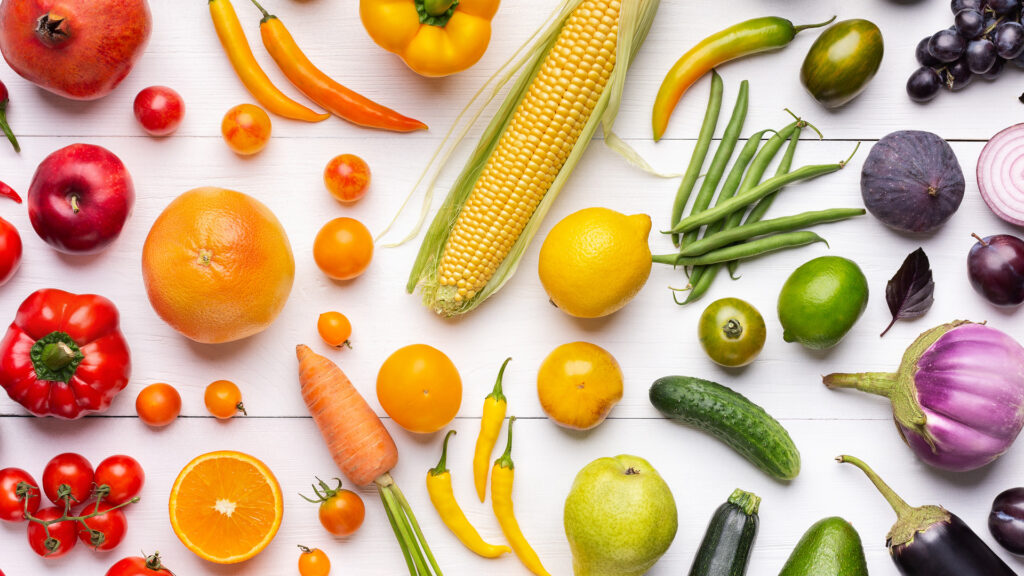
5 Fresh Food Tips for Diabetes...
Learning more about food and diabetes will lower your stress and help you enjoy good food and good health. Follow up on appointments with a registered dietitian-nutritionist or diabetes educator to get personalized nutrition care, ideas and short cuts. Get started with these tips:
- Don’t skip meals or make big changes to food habits – eat breakfast, lunch and dinner, and perhaps a small snack if needed.
- Trade regular sweetened drinks like soda, iced teas or specialty coffees for sugar-free or low sugar versions.
- Enjoy more vegetables that are not starchy – salads, raw and cooked spinach, broccoli, asparagus, tomatoes – double up, or use half of your plate as your guide.
- Eat small servings of carbohydrate (carb)-rich foods like bread, pasta, and potatoes as part of balanced meals. Trade regular breads (90-110 calories/slice) for light bread, (45 calories/slice), explore whole grain sandwich thins, or high fiber English muffins for breakfast and lunch options.
- Save grocery receipts, write down what you like and what you eat for meals and snacks. Bring those receipts and lists to your appointments. Your healthcare team can review with you and support your smart choices.

5 Tips to Make a Great Plate
- Make half the plate fruits and vegetables. Use fresh, frozen, canned or 100% juice items. Double servings on favorites makes it easy to eat more!
- Make ¼ of the plate whole grains or starchy vegetables. Brown rice, quinoa, barley, oats, cereals, pasta, ancient grains – there are many ways to enjoy whole grains. Enjoy small servings of roasted or baked/sweet potatoes or peas. Use the Whole Grain shelf tag guide in stores to choose well.
- Use herbs, spices and fresh citrus juice and zest to add flavor and lower sodium.
- Opt for low fat dairy – 2 to 3 servings per day.
- Go easy on sweets, including drinks and desserts. Explore seltzers, spritzers and fruit-based desserts to satisfy your sweet tooth and get more produce.
BEST PRACTICES - Managing Diabetes Well
• See your Diabetes Provider regularly.
• Work with your Pharmacist and follow all medication directions.• Test your blood glucose as directed by your Provider.
• See a Certified Diabetes Educator and Registered Dietitian-Nutritionist upon diagnosis and at least once per year.
• Complete your lab work for A1c, glucose, and cholesterol as directed by your Provider.
• Stay up to date on your annual eye exam.
• Get your annual flu shot and pneumonia shot.
• Check your blood pressure.
Learn more: American Diabetes Association http://www.diabetes.org

Shopping Savvy - Know Your Labels
Shopping with health in mind is smart. Start with learning more about food labels, and understanding serving sizes. Food labels are changing, and you will find two versions on packages in our stores.
Older labels do not have a section for “Added Sugars” – new labels will have “Added Sugars” under the carbohydrate section by January 2020. Learn more about label reading and serving sizes at the links below.
Food Labels — FDA infographic – reading a food label
https://www.fda.gov/food/food-labeling-nutrition/changes-nutrition-facts-label
Serving Smarts — Serving sizes – FDA infographic
https://www.fda.gov/consumers/consumer-updates/food-serving-sizes-get-reality-check
Content on this website is for general information purposes only, and is not intended or implied to be a substitute for professional medical advice. Always seek the advice of your physician or other qualified health provider prior to starting any new treatment or with questions regarding a medical condition.




